#sir john gielgud
Text
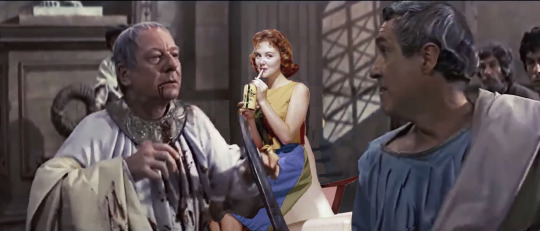
Sir John Gielgud as Caesar, Jason Robards as Brutus and Shelley Fabares as Portia in 1970's Julius Caesar.
Go cry about your tenure’s end
Go complain to Aunt Blabby
For those who keep too many friends
Life can get a little stabby
#the ides of march#julius caesar#brutus#rome#shakespeare#the theatre of betrayal#shelley fabares#sir john gielgud#jason robards#march 15#beware the ides of march#ides of march
8 notes
·
View notes
Text
youtube
Sonnet 24 by William Shakespeare (read by Sir John Gielgud)
Mine eye hath played the painter and hath steeled,
Thy beauty's form in table of my heart;
My body is the frame wherein 'tis held,
And perspective that is best painter's art.
For through the painter must you see his skill,
To find where your true image pictured lies,
Which in my bosom's shop is hanging still,
That hath his windows glazed with thine eyes.
Now see what good turns eyes for eyes have done:
Mine eyes have drawn thy shape, and thine for me
Are windows to my breast, where-through the sun
Delights to peep, to gaze therein on thee;
Yet eyes this cunning want to grace their art,
They draw but what they see, know not the heart.
Source: William Shakespeare - Sonnets, 1996
3 notes
·
View notes
Text
Sonnet 30 by William Shakespeare - Read by Sir John Gielgud
#William Shakespeare#Shakespeare#Sonnet 30#Sonnet#Sir John Gielgud#John Gielgud#poem#poetry#Saleh Badrah#Poetictouch
7 notes
·
View notes
Text
Murder on the Orient Express [1974]
Murder on the Orient Express [1974]
Murder on the Orient Express (1974) starring Albert Finney, Lauren Bacall, Michael York, directed by Sidney Lumet
Synopsis of Murder on the Orient Express
Famous detective Hercule Poirot is on the Orient Express, but the train is caught in the snow. When one of the passengers is discovered murdered, Poirot immediately starts investigating the Murder on the Orient Express.
(more…)

View On WordPress
#1974#Albert Finney#Anthony Perkins#Dame Wendy Hiller#Ingrid Bergman#Jacqueline Bisset#Jean-Pierre Cassel#Lauren Bacall#Martin Balsam#Michael York#Rachel Roberts#Richard Widmark#Sidney Lumet#Sir John Gielgud#Sir Sean Connery#Vanessa Redgrave
4 notes
·
View notes
Text
A very happy birthday in the afterlife to John Gielgud!!
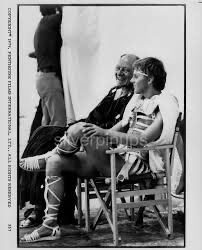









1 note
·
View note
Text
John Gielgud on Romeo and Juliet, from a letter to Richard Sterne dated June 22, 1963, as quoted in Sir John Gielgud: A Life in Letters:
All thanks for your two letters. I am delighted to hear Ashland [Oregon Shakespeare Festival] is so much to your liking, and that you are to try a fall with Romeo. You will find the part a great challenge and often unsatisfactory, for Juliet has all the best positions in the text – the Banishment must not seem an anti-climax after her great cords scene – similarly the Mantua scene is hard to put over after the Potion – and the mourning. You only manage to beat her to it in the Tomb – and you will surely get a crick in the neck, while she queens it up on that damned balcony! Don’t let the director convince you that the love scenes are realistic. The ball scene meeting is a SONNET, the Balcony the epitome of longing and romantic imagination and ‘getting to know you’. The Wedding is the only scene when he really declares his most complete surrender to her (and she to him). The farewell is not a rough and tumble on the bed. It ought to be played on the same balcony as the other one – only they are worn out with the past night and the agony of parting – morning light, bleak despair = EPITHAL[AM]IUM – foreboding on both their parts which they try vainly to hide from each other. The evanescence of youth and passion – the hectic hopelessness of the moment they are both strangely aware of – then in the Mantua scene, he grows up in a single moment ‘Then I defy you, stars!’, he is suddenly a man and not a boy, no longer affected (Rosaline scene), not rash (encounter with Tybalt at the Ball and the Mercutio death). He has no sense of humour – he is a doomed young madman (but must not be too conscious of it himself!). In the tomb he is tired again suddenly – (the effort of control when he heard the news of her death, the long ride from Mantua to Venice, the blind rage as he kills Paris) and, marvellously, he shivers in the cold silence and dimness (just as SHE described it in the Potion scene) and he promises to stay there and look after her in that icy stillness. SIMPLE. (I only found this extraordinary truth in doing the death speech by itself out of context in the Recital.) It is a wonderful part. I know how to play it well now, but I could never convey it on the stage. Olivier was Romeo (though he couldn’t speak it in those days) because he was absolutely the lover of all time in the way he looked at Juliet and leaned against the balcony, and flung himself on Tybalt, but he was VULGAR in the farewell because he insisted on lying on top of Juliet and giving a physical violence in the love scenes which Shakespeare could not have imagined (or risked) with his boy Juliet! The words must do it. But they must give you a beautiful SIMPLE costume, and every help with wig and make-up. The first entrance – from a distance – is very important for the first impression, and grace of manner and deportment must be blended to a feline sensuality and sudden violence at a few important moments. You need to relax with a Latin indolence, but always with an underlying athleticism and a power that is ready to strike – like a flame – in the moments of fury and expressed emotion. So full of feeling at one moment – and an emptiness at others for contrast – the utter spontaneity which Latin people have when they are very attractive – and very young!
You can see why Sterne thought it would be worthwhile to record Hamlet rehearsals. Read all about those with Emails from an Actor!
#sorry about the lack of paragraph breaks it's gielgud's fault#also way to be weird about italians sir john#anyway i decided i'm gonna read the letters from the relevant time period and sprinkle in any interesting bits :D#john gielgud#romeo and juliet#emails from an actor
25 notes
·
View notes
Photo
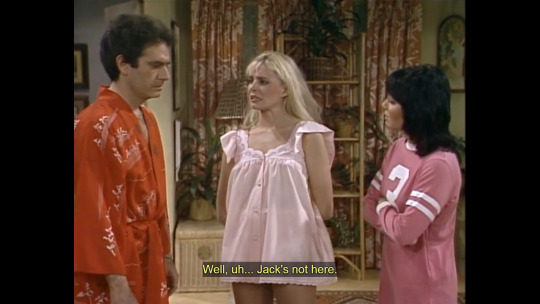

me looking at the oscars won for something's gotta give
6 notes
·
View notes
Photo

Gielgud Blue Plaque Unveiling, 2017
Photographer: John Phillips
#Judi Daily!#Blue plaque unveiling#Judi Dench#Dame Judi Dench#Photographer: John Phillips#For Sir John Gielgud
5 notes
·
View notes
Text

Sir John Gielgud as Sherlock Holmes, Orson Welles as Prof. Moriarty, and Sir Ralph Richardson as Watson for the BBC’s “The Adventures of Sherlock Holmes” (1954-1955)
48 notes
·
View notes
Text
youtube
Sonnet 22 by William Shakespeare (read by Sir John Gielgud)
My glass shall not persuade me I am old,
So long as youth and thou are of one date;
But when in thee time's furrows I behold,
Then look I death my days should expiate.
For all that beauty that doth cover thee,
Is but the seemly raiment of my heart,
Which in thy breast doth live, as thine in me:
How can I then be elder than thou art?
O! therefore, love, be of thyself so wary
As I, not for myself, but for thee will;
Bearing thy heart, which I will keep so chary
As tender nurse her babe from faring ill.
Presume not on thy heart when mine is slain,
Thou gav'st me thine not to give back again.
Source: William Shakespeare - Sonnets, 1996
5 notes
·
View notes
Text

"There's been a murder!" arguably the most uttered phrase ever by a Scottish TV cop and on February 21st 1935 the man himself, Mark McManus was born.
Taggart star Mark McManus, despite dying aged just 59, in 1994, lived more lives than most. Hamilton-born Mark had already been a miner, a docker, and an amateur boxer before he took up acting - in Australia, where he shared screen time with both Skippy The Bush Kangaroo, and Mick Jagger, in director Tony Richardson's 1970 take on the Ned Kelly story
Returning home in 1971, McManus appeared in productions at the Royal Court and the National Theatre, playing alongside such actors as Sir John Gielgud and Sir Ralph Richardson. But it was not until 1983 that he found the role which he was born to play, Tough Glasgow polisman, Jim Taggart. To some critics, the character veered into the danger zone of caricature: the sort of Glaswegian hardnut who could be summed up by all those cliched epithets: 'dour', 'gruff', 'gritty', 'stony-faced', he certainly carried off the part with ease.
He may have come across all of them, but in real life Mark loved a wee laugh to himself, one anecdote I found to confirm this relates to last weeks birthday girl, Annette Crosbie, who incidentally attended Edinburgh's Boroughmuir School with my Uncle Edmund!.
Anyway Annette featured in a 1987 edition of Taggart. Being a perfectionist, she kept asking McManus to rehearse together. McManus, who usually read over his lines just once before filming, became so annoyed that during one scene he went to light her cigarette and "accidentally" burnt away part of her wig with an extra-long flame (a gaff which later featured on It'll be Alright on the Night). While making the next episode, McManus quipped to a co-star, "I hope you're not gonna be any trouble or I'll set you on fire like the last one!"
McManus was a graduate summa cum laude of the 'Less Is More' School of Acting.
An average of 13 million viewers (including, it is said, the Queen Mother) agreed. Taggart became as synonymous with Glasgow as Inspector Morse is with Oxford. The programme is now Scottish Television's biggest money-earner, playing in over 60 countries, including Afghanistan, India, Japan, Sri Lanka, Brunei and Bosnia. Wonder how they all translated the word "murd'rrr"?!!?
15 notes
·
View notes
Text
THIS DAY IN GAY HISTORY
based on: The White Crane Institute's 'Gay Wisdom', Gay Birthdays, Gay For Today, Famous GLBT, glbt-Gay Encylopedia, Today in Gay History, Wikipedia, and more … April 14

April 14, 1962 Description: People mailing their taxes.

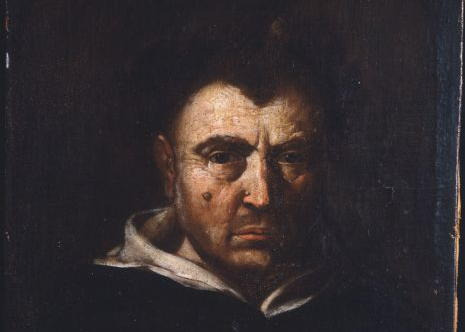
1600 – Italy: Philosopher Tomasso Campanella (1568-639) is jailed, spending twenty-seven years imprisoned in Naples in various fortresses. He was a Dominican friar, Italian philosopher, theologian, astrologer, and poet.
He is overheard saying to his cellmate: "O Father Pietro, why don't you do something so that we may sleep together, and we may get pleasure?" Pietro replied "I wish I could, and I'd even bribe the gaolers with ten ducats. But to you, my heart, I would like to give twenty kisses every hour."
Campanella was finally released from prison in 1626, through Pope Urban VIII, who personally interceded on his behalf with Philip IV of Spain. Taken to Rome and held for a time by the Holy Office, Campanella was restored to full liberty in 1629. He lived for five years in Rome, where he was Urban's advisor in astrological matters.

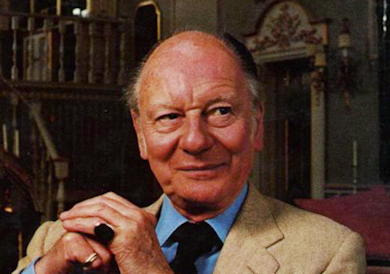
1904 – Born: Sir John Gielgud (d.2000), long acknowledged as one of the greatest British actors of the twentieth century. A highly versatile performer, he played leading and character roles on both stage and screen, in every genre from classical tragedy to low comedy. While in many ways reticent about his sexuality, his experiences illustrate the significant changes in public attitude towards homosexuality over the decades.
Arthur John Gielgud was born in London on April 14, 1904 to a family with theatrical backgrounds on both sides. His father was the son of a Lithuanian actress, and, through his mother, he was the great-nephew of Dame Ellen Terry, the most renowned British actress of the nineteenth century.
Gielgud began acting in his teens, joining the Old Vic theater company in 1921, and making his film debut in the silent picture Who Is That Man? (1923). Soon thereafter, Gielgud became Noël Coward's understudy, eventually taking over the lead roles in Coward's play The Vortex (1924) and Margaret Kennedy's The Constant Nymph (1924). Other successes followed quickly, as Gielgud began to play major Shakespearean roles at the Old Vic, beginning with Romeo, and, before he was thirty, the more mature lead roles in Richard II, The Tempest, Macbeth, Hamlet, and King Lear.

Gielgud as Hamlet
During this time, he began his first major relationship. Actor John Perry lived with him until their separation in the early 1940s.
By the 1930s, Gielgud was a box-office idol—a rather unlikely one, given his bulbous nose and unprepossessing figure; indeed, his detractors thought his Romeo "feminine." His great gifts were his cat-like mobility and, most notably, his expressive voice, which fellow actor Sir Alec Guinness described as being "like a silver trumpet muffled in silk."
Gielgud also became a respected stage director, launching his own distinguished company in 1937 at the Queen's Theatre. He directed and often performed in productions of Shakespeare and such classics as School for Scandal, Three Sisters, and The Importance of Being Earnest. In 1953, Gielgud was named in Queen Elizabeth's Coronation Honors List as the recipient of a rather belated knighthood. That this honor came about at all was a result of two of his colleagues, Sir Laurence Olivier and Sir Ralph Richardson, pleading with Prime Minister Winston Churchill to remedy the grievous oversight.
As Gielgud's homosexuality was generally known if not publicly acknowledged in a time when sexual acts between men were still a criminal offense in Britain (and remained so until 1967), the government had been reluctant to bestow its approval on him. Given the controversy over his knighthood, it was cruelly ironic that within months of receiving the honor, Gielgud was involved in an embarrassing incident that might have been fatally damaging to his career.
During the early 1950s, British legal authorities conducted a veritable persecution of gay men that resulted in criminal charges against a number of prominent figures. Gielgud was arrested outside a public lavatory in Chelsea for "importuning for an immoral purpose," and the press conducted a vitriolic campaign against him. Gielgud nonetheless received a standing ovation upon his next stage appearance, and his arrest is thought to have been instrumental in starting the process of decriminalization. (The incident did not, moreover, prevent the Queen from granting him two further distinctions, the Companion of Honour [1977] and the Order of Merit [1996].) But, having been so deeply humiliated, Sir John never spoke publicly about the matter or his sexuality again, and he was banned from entering the United States for the next four years.
After World War II, Gielgud's career shifted, as he began to appear with greater frequency in the character roles for which he is now best remembered. With the advent of the "Angry Young Men" of the 1950s, Gielgud's acting style was greatly out of fashion on the British stage, and, accordingly, he appeared more frequently in motion pictures. He acted in more than 130 films in his long career, the greater portion of which were made between the 1960s and the 1980s; and in 1982 he received the Academy Award for Best Supporting Actor for his portrayal of the sardonic butler in Arthur.
Finding it increasingly difficult to commit lengthy dialogue to memory, Gielgud retired from the stage in 1988, but continued to perform in films, nearly until the end of his life. At the age of eighty-six, he had his first nude scene in Prospero's Books (1991), and he subsequently appeared in Shine (1996), The Portrait of a Lady (1996), and Elizabeth (1998).
In 1999, he was deeply bereaved by the death of his partner Martin Hensler, with whom he had lived for nearly forty years. Within months, on May 21, 2000, Gielgud himself passed away quietly at his home in Aylesbury, Buckinghamshire, at age ninety-six.


1906 – Elmyr de Hory (born Elemér Albert Hoffmann; d.1976) was a Hungarian-born painter and art forger, who is said to have sold over a thousand art forgeries to reputable art galleries all over the world. His forgeries garnered celebrity from a Clifford Irving book, Fake (1969); a documentary essay film by Orson Welles, F for Fake (1974); and a biography by Mark Forgy, The Forger's Apprentice: Life with the World's Most Notorious Artist (2012).
De Hory claimed that he was born into an aristocratic family, that his father was an Austro-Hungarian ambassador and that his mother came from a family of bankers. However, subsequent investigation has suggested that de Hory's childhood was, more likely, of a middle-class variety; he was born Elemér Albert Hoffmann. (An acquaintance, Fernand Legros, said that de Hory was born in Budapest (Hungary) 14 April 1905, but that de Hory would change the date to 1914 to appear younger.) Both his parents were Jewish. His father's occupation was listed as "wholesaler of handcrafted goods." His parents did not divorce when he was sixteen, as he had asserted in the Clifford Irving biography.
At the outbreak of the Second World War, de Hory was imprisoned in a German concentration camp for being both a Jew and a homosexual. (While his homosexuality was proven over time, investigation into his past has shown the likelihood that he was at one time christened as a Calvinist. Such an ostensible conversion did not stop the Nazi government from targeting people who were born Jewish for extermination.) He was severely beaten and was transferred to a Berlin prison hospital, from which he escaped. He returned to Hungary, and it was there, he said, that he learned that his parents had been killed and their estate confiscated. However, according to Mark Forgy's account, both de Hory's mother and brother were listed as Holocaust survivors.
On arriving in Paris after the war, de Hory attempted to make an honest living as an artist, but soon discovered that he had an uncanny ability to copy the styles of noted painters. He began to sell his Picasso pastiches to art galleries around Paris, claiming that he was a displaced Hungarian aristocrat and his offerings were what remained from his family's art collection or else that he had acquired them directly from the artist, whom he had known during his years in Paris.
In 1959, suffering from depression, he attempted suicide by overdosing on sleeping pills. A friend rescued him and called an ambulance. His stomach was pumped, and after a stay in the hospital de Hory convalesced in New York City, helped by an enterprising young man, Fernand Legros. Legros' account of his dealings with de Hory differs substantially from de Hory's own. He portrays de Hory as an aggressive and persistent con man, who suckers Legros into the belief that he is a needy impoverished aristocrat deserving of Legros's charity, whereas in reality he is a person wanted by Interpol under a multitude of different aliases and convicted of a variety of crimes, forgery and fraud being not the least of them; de Horys is object of pursuits, convictions and expulsions from France, Switzerland, Italy, Federal Germany, Great Britain, from Mexico, from the United States, from Canada, for false check writing without funds, check forgery, forgery carrying a false name, theft, receiver and purveyor of stolen goods, and embezzlement.
In de Hory's account, Legros accompanied de Hory back to Miami where he continued to regain his health. When he imprudently took Legros into his confidence, the other man quickly recognized an opportunity and importuned the artist to let him sell his work in exchange for a 40% cut of the profits, with Legros assuming all the risks inherent in the sale of forgeries.
With Legros, de Hory again toured the United States. In time, Legros demanded his cut be increased to 50%, when in reality Legros was already keeping much of the profit. On one of these trips Legros met Réal Lessard, a French-Canadian who later became his lover. The two had a volatile relationship, and in late 1959 de Hory decided to leave the two and return to Europe.
In Paris, de Hory unexpectedly once more ran into Legros. De Hory revealed to him that some of his forgeries were still back in New York. According to de Hory, Legros devised a plan to steal the paintings and sell them, making a name for himself and his art gallery in the process. Later that year, de Hory's account continues, Legros persuaded de Hory to resume their partnership. Legros and Lessard would continue to sell de Hory's work and agreed to pay him a flat fee of $400 a month, enough to guarantee de Hory a comfortable and risk-free life in his newfound home, the Spanish Mediterranean island of Ibiza.
De Hory always denied that he had ever signed any of his forgeries with the name of the artist whom he was imitating. This is an important legal matter, since painting in the style of an artist is not a crime—only signing a painting with another artist's name makes it a forgery. This may be true, as Legros or Lessard may have signed the paintings with the false names.
In 1964, now 58 years old, de Hory began to tire of the forgery business, and soon his work began to suffer. Consequently, many art experts began noticing that the paintings they were receiving were forgeries. Some of the galleries examining de Hory's work alerted Interpol, and the police were soon on the trail of Legros and Lessard. Legros sent de Hory to Australia for a year to keep him out of the eye of the investigation.
De Hory continued to elude the police for some time but, tired of life in exile, decided to move back to Ibiza to accept his fate. In August 1968, a Spanish court convicted him of the crimes of homosexuality, showing no visible means of support, and consorting with criminals (Legros), sentencing him to two months in prison in Ibiza. He was never directly charged with forgery because the court could not prove that he had ever created any forgeries on Spanish soil. He was released in October 1968 and expelled from Ibiza for one year. During that time he resided in Torremolinos, Spain.
One year following his release, de Hory, by then a celebrity, returned to Ibiza. He sold his story to Clifford Irving, who wrote the biography Fake! The Story of Elmyr de Hory the Greatest Art Forger of Our Time. De Hory appeared in several television interviews and was featured with Irving in the Orson Welles documentary F for Fake (1973). In Welles's film, de Hory questioned what it was that made his forgeries inferior to the actual paintings created by the artists he imitated, particularly since they had fooled so many experts and were always appreciated when it was believed that they were genuine. In F for Fake, Welles also poses questions about the nature of the creative process, how trickery, illusion, and duplicity often prevail in the art world, and thus, in some respects, downplays the culpability of the art forger de Hory and outliers like him.
During the early 1970s, de Hory again decided to try his hand at painting, hoping to exploit his newfound fame: this time, he would sell his own, original work. While he had gained some recognition in the art world, he made little profit, and he soon learned that French authorities were attempting to extradite him to stand trial on fraud charges. This took quite some time, as Spain and France had no extradition treaty at that time.
On December 11, 1976, de Hory's live-in bodyguard and "companion" Mark Forgy informed him that the Spanish government had agreed to extradite de Hory to France. Shortly thereafter, de Hory took an overdose of sleeping pills, and asked Forgy to accept his decision and not intervene or prevent him from taking his life. However, Forgy later went for help to take de Hory to a local hospital, though en route he died in Forgy's arms. Clifford Irving has expressed doubts about de Hory's death, claiming that he may have faked his own suicide in order to escape extradition, but Forgy has dismissed this theory.


1912 – The RMS Titanic strikes an iceberg just before midnight on April 14th. By 2:20 AM, she broke apart and foundered, taking over one thousand three hundred people still aboard to their deaths. Just under two hours after the Titanic foundered, the Cunard liner RMS Carpathia arrived on the scene of the sinking, where she brought aboard an estimated 705 survivors. Among the known gay people who died on the Titanic were crew members second carpenter Michael Brice and Third Officer Sam Maxwell as well as Archibald Willingham Butt who served as an influential military aide to U.S. presidents Theodore Roosevelt and William Howard Taft.


1935 – Erich von Däniken is a controversial Swiss author best known for his claims about extraterrestrial influences on early human culture, in books such as Chariots of the Gods?, published in 1968. Von Däniken is one of the main figures responsible for popularizing the paleocontact and ancient astronaut hypotheses.
Von Däniken is a co-founder of the Archaeology, Astronautics and SETI Research Association (AAS RA). He developed a theme park called Mystery Park in Interlaken, Switzerland, which opened on May 23, 2003 and closed on November 19, 2006.
His 26 books have been translated into more than 20 languages, selling more than 60 million copies worldwide, and his documentary TV shows have been viewed around the world.
Von Däniken's run-ins with the law started at an early age. In the 1960s, Von Däniken worked in hotels and restaurants across Switzerland, and then he was convicted of fraud, serving a prison sentence for defrauding his boss at one hotel. In 1967, soon after Chariots of the Gods was published he was arrested and charged by Interpol with fraud and tax evasion for non-payment of US$14,000.00. On behalf of the prosecution, he was ordered by the Court to undergo psychological examinations, and labelled a homosexual, reflecting a time when being homosexual carried a negative stigma. During the investigation, authorities uncovered a large personal debt totaling about US$700,000. Von Däniken was found guilty of embezzlement, and he served more than three years in Swiss prisons. While in prison, he continued writing, and 'Return of the Gods' was subsequently published.


Dan Roos (L) with Lisa Kudrow & Dan Bucatinsky
1955 – Don Roos is an American screenwriter and film director. Roos was born in New York. He attended the University of Notre Dame in Indiana. After graduating, Roos moved to Los Angeles, where he pursued a career writing for television.
Roos began his writing career when he had a friend of his impersonate an agent and represent him; a phone call led to a job with playwright Mart Crowley (The Boys in the Band), who at the time was Executive Producer of Hart to Hart. Roos went on to write for The Colbys, Nightingales, and other TV shows, before his spec scripts led to feature film writing assignments. His first major film was 1991's Academy Award-nominated Love Field, an interracial drama starring Michelle Pfeiffer and Dennis Haysbert.
Roos' work as the writer of the film Single White Female has earned him a permanent space in Hollywood movie trivia, since that title has entered the lexicon in reference to the film's psychopathic lead character who begins to take on her roommate's identity.
Roos is well-known for his work writing strong and engaging female characters. Ironically, In a 1999 interview in The Advocate, Roos stated that prior to scripting Boys on the Side and The Opposite of Sex, "as a Hollywood screenwriter, I was used to disguising my gay characters as heterosexuals" because of homophobia in the film establishment. His use of an interracial attraction in Love Field, for example, was a way of talking about "a love that dare not speak its name." Roos explained that he used women to stand in for gay men dealing with emotional conflict because "men are still stuck in that ridiculous '50s attitude. They're never allowed to play real fear or any kind of weakness. Women get to play all those feelings." Roos won a Best First Feature Independent Spirit Award for The Opposite of Sex.
In 2000, Roos served as the executive producer of All Over the Guy (2001), a comedy about four friends—a gay couple and a straight one—on an often bumpy road to romance. The assignment gave him the opportunity to work with his life partner since the mid-1980s, writer and actor Dan Bucatinsky.
Roos has appeared at numerous glbtq film festivals, including three at his alma mater, Notre Dame, but he severed that connection after the 2006 event, prior to which the school's president, the Reverend John Jenkins, had condemned the name of the Queer Film Festival as one that would "celebrate and promote homosexual activity" in contravention of Catholic doctrine."I will never come back to Notre Dame again--ever," declared Roos. "When I come here, all I feel is hate. They don't want me here. They don't want me to have my daughter [in the same house] with my boyfriend. They think I will burn in hell. Would Anne Frank go back to Bergen-Belsen?"
Adopting a child in 2005 was a source of great joy for Roos and Bucatinsky. Roos supports a woman's right to choose abortion but was glad to find a woman who not only decided to carry through her pregnancy but also chose a gay couple as the adoptive parents for the child, who was born in Wisconsin. Roos and Bucatinsky were able to file an amended birth certificate in California, with both of their names listed as parents.


1987 – Mississippi creates a "Sex Offense Criminal History Record Information" program. It creates a state registry of convicted sex criminals, including for consensual sodomy. Employers are permitted to request information about employees from it.


10 notes
·
View notes
Text

Lillian was 40 when the director Guthrie McClintic suggested to Sir John that she should play Ophelia to his Hamlet.
”Gielgud’s reply got back to me,” she said. ” ‘She’s lovely, but is she young enough?’ He was appearing on Broadway – it was 1936 – and undaunted I presented myself in his dressing room and asked him point-blank – ‘Well, am I young enough?’ ”
He apparently said yes, for Miss Gish recalled, ”We had a long run at the Empire Theater, with Judith Anderson as Queen Gertrude.”
10 notes
·
View notes
Text
Psst, wanna read the book this flap copy is about (and another one that adds some context)?
In the cast of the 1964 Sir John Gielgud-Richard Burton Hamlet was William Redfield, playing Guildenstern. During the three months of the play’s preparation, from the rehearsals through the out-of-town tryouts to the gala opening night on Broadway, William Redfield wrote a series of letters describing the daily happenings and his impressions of them. Here, ‘beaten with a stick, and told to behave’, as Mr. Redfield claims, they have been made into Letters from an Actor, a brilliantly unusual book and surely one of the most stimulating and delightful ever to come from the theatre.
It is itself a series of plays within a play. Certainly here is an account of Gielgud’s production—inspired and erratic, flamboyant and puzzling—and of Burton’s determined approach to this most challenging of roles; certainly it tells of the processes by which a cast that included Eileen Herlie and Alfred Drake forged one of the most talked-of performances of Hamlet. But in the wings are a hundred and one other figures who throng this stage as surely as the players. Elizabeth Taylor is there in person, a lovely and admired bystander. Olivier is there, unseen but ever-present in argument and anecdote, a magician commanding the Shakespearian stage. So also are Ralph Richardson, Guthrie, Edith Evans, O’Toole and Brando; the Lunts, Guinness, Scofield, Barrymore, Diana Wynyard, even Burbage and Garrick; and above all the towering presence of Shakespeare himself.
Our guide throughout is William Redfield: perceptive, acerbic, witty, a teller of tales cautionary and hilarious—an actor. When Paul Scofield read these Letters he wrote to him: ‘I’ve always admired the way you can turn the confusion of an acting “problem” into a lucid and witty conversation piece .... Your book is so full of affection for your subjects, and it’s very moving to rediscover one’s love for such as Burton and Gielgud through the medium of your marvellously vivid letters. I’ve never seen the tortuous and elusive process of the production of a play from first to last so truthfully realized .... The book is endlessly fascinating. Your observation has a spot-on accuracy. I feel I was there .... You can write! Actors rarely can, but you can.’
To which we can only add that it is also great good fun.
Then sign up for Emails from an Actor! More information here. :D
#john gielgud#richard burton#elizabeth taylor#laurence olivier#ralph richardson#marlon brando#boy did redfield have OPINIONS about brando#hamlet#shakespeare#emails from an actor
35 notes
·
View notes
Text
Tagged by @ladyofparchments for 7 comfort films! (Almost all of them are Halloween ones ahaha!)
I have so much childhood nostalgia with 1-5. I used to sit curled up on the couch when I was home alone and cycle constantly through these movies. X//D And I would watch them even more during spooky season ahaha. #6 was a newer find, I was a little older when I watched this one, but it quickly became a favorite. ^-^ ) And #7 is an honorable mention, not as watched as the others, but a very beloved movie from my childhood.
1. Hocus Pocus
2. Halloween Town
3. Haunted Mansion ( 2003)
4. Practical Magic
5. Something Wicked This Way Comes
6. The Great Ghost Rescue
7. The Canterville Ghost (1986) Sir John Gielgud
I am tag:
@pumpkin-fr0g @myrablurple @veecalaveras @ashasmonsters @windydrawallday @the-wizard-writes @faeriemere
10 notes
·
View notes
Text

Sir John Gielgud (April 14, 1904 – May 21, 2000)
30 notes
·
View notes